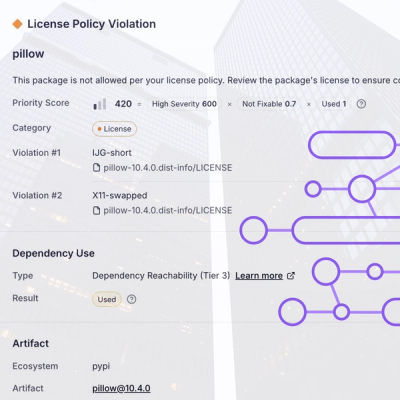
Research
/Security News
Critical Vulnerability in NestJS Devtools: Localhost RCE via Sandbox Escape
A flawed sandbox in @nestjs/devtools-integration lets attackers run code on your machine via CSRF, leading to full Remote Code Execution (RCE).
points-on-curve
Advanced tools
Estimate points on a bezier curve or a set of connexted bezier curves
This package calculate the points on a curve with a certain tolerance. It can also simplify the shape to use fewer points. This can really be useful when estimating lines/polygons for curves in WebGL or for Hit/Collision detections.
From npm
npm install --save points-on-curve
The package is distributed as an ES6 module.
You pass in the points representing a bezier curve. Each point is an array of two numbers e.g. [100, 123].
The points can also be a set of continuous curves where the last poing on the Nth curve acts as the first point of the next.
import { pointsOnBezierCurves } from 'points-on-curve';
const curve = [[70,240],[145,60],[275,90],[300,230]];
const points = pointsOnBezierCurves(curve);
// plotPoints(points);

Same can be rendered with more tolerance (default value is 0.15):
const points = pointsOnBezierCurves(curve, 0.7);

Note that this method does not accept the number of points to render, but takes in a tolerance level which allows for better distribution of points.
The value of tolerance can be between 0 and 1. It is used to decide how many points are needed in a section of the curve. The algorithm determined the flatness of a section of the curve and compares it to the tolerance level, if less flat, the segment gets further divided into 2 segments.
Based on the tolerance alone, this algorithm nicely provides enough points to represent a curve. It does not, however, efficiently get rid of unneeded points. The second optional argument in function, distance helps with that. If a distance value is provided, the method uses the Ramer–Douglas–Peucker algorithm to reduce the points.
const points = pointsOnBezierCurves(curve, 0.2, 0.15);
Following are the points generated with distance values of 0.15, 0.75, 1.5, and 3.0




Sometimes it's hard to think of shape as a set of cubic bezier curves, each curve with 2 controls points. It is simple to just think of them as a curve passing through a set of points.
This method turns those set of points to a set of points representing bezier curves.
import { curveToBezier } from 'points-on-curve/lib/curve-to-bezier.js';
const curvePoints = [
[20, 240],
[95, 69],
[225, 90],
[250, 180],
[290, 220],
[380, 80],
];
const bcurve = curveToBezier(curvePoints);
// .. Plot bcurve

Now that we have bezier points, these could be passed to pointsOnBezierCurves function to get the points on the curve

FAQs
Estimate points on a bezier curve or a set of connexted bezier curves
The npm package points-on-curve receives a total of 781,127 weekly downloads. As such, points-on-curve popularity was classified as popular.
We found that points-on-curve demonstrated a not healthy version release cadence and project activity because the last version was released a year ago. It has 1 open source maintainer collaborating on the project.
Did you know?

Socket for GitHub automatically highlights issues in each pull request and monitors the health of all your open source dependencies. Discover the contents of your packages and block harmful activity before you install or update your dependencies.

Research
/Security News
A flawed sandbox in @nestjs/devtools-integration lets attackers run code on your machine via CSRF, leading to full Remote Code Execution (RCE).

Product
Customize license detection with Socket’s new license overlays: gain control, reduce noise, and handle edge cases with precision.

Product
Socket now supports Rust and Cargo, offering package search for all users and experimental SBOM generation for enterprise projects.